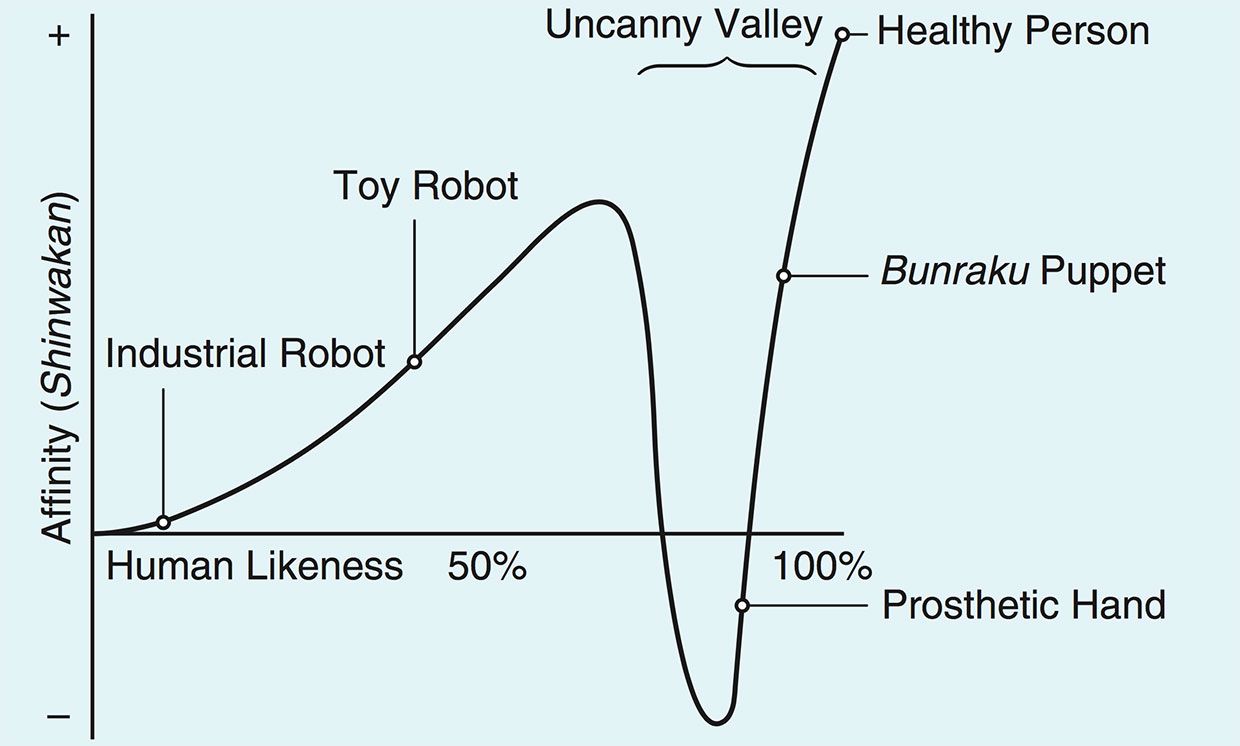Amplifying the Uncanny
by Terence Broad, Frederic Fol Leymarie, Mick Grierson
Pushing the limits of Perfection:
The relationship between Generative Art and the uncanny is their ability to create something unexpected from a given set of data, and then generating further distortion at greater emphasis; kind of like evolution. In deepfakes, “machines [are] optimised to make representations that are more realistic, they also generate information on whether or not a generated image is fake.” However, the cool part of this is that even though these machines can be so precise, they can end up unexpectedly making the generated image less precise; it becomes distorted because the machine is constantly improving and sharpening the accuracy of any “out of place” element on an art piece or photo. As the machine does not have human limitations imposed on it, it does not know when to stop. This unpredictability of how far the machine can push the limits of distortion can be seen as a form of generative art.
Evolution into Unpredictability through “Over-learning”:
In the text, “Machine Learning” is also introduced, where it “generates patterns in data… to predict future data or other outcomes of interest”, with the mindset of “solving” a pre-defined objective. In the text, Mackenzie also reminds us that machine learning is about the knowledge-practice and not knowledge-consciousness. In other words, it is the repeated process of the same thing over and over again by the machine which provides greater accuracy and precision of a desired outcome (as they have no brain to think and be conscious about the details they are producing). This is a form of growing, compared to the usual programming and coding of specific instructions for machines to execute. I think that this is significant in explaining how vast generative art can be; when a machine “grows”, it does so by self-improvement through previous data created but when there is no “stop button”, it becomes unpredictable and beyond our physical calculations since it is also endless. The unpredictable results become an art form that we could not have foreseen.
The Elimination of “Zombie Art” through the Unknown:
However, it is mentioned that there is public perception that GAN generated artwork is also considered “zombie art”. It is said that there is a reliance on deep neural networks to produce neverending variations based on one sample of information fed into the system, but this system of construction is not meaningful. Even though it can seem mesmerising at first, it can eventually become monotonous after a while because viewers will start to feel overwhelmed by the “sublime of algorithmic productivity”. I agree with this standpoint because we have such short attention span. When something is too repetitive, we can “predict” what is generally going to happen next and end up not chasing the information further; since it is no longer an “unknown” that we are curious about. As people are usually lazy and will not want to do meaningless things which is why we leave it to the machines instead. However, if the growth is something that is unpredictable, it will not be meaningless and instead be intriguing. However, we are then left in puzzlement with regards to how to make something precise (since most digital artworks with auto-generation relies on pre-calculated equations) and yet not monotone.
What is the Fine Line for Humanity?:
I think that it is also interesting that the authors of this text explored what it meant to be at unease due to uncanniness; they defined it as the state where the fine line is just crossed between what is living and what is machine. When something does not resemble human to a large extreme, it is easy to regard it as fake and objective, but when something lies in between, we start to become confused about the identity and origin of the object and become uncertain about how we should classify the subject. It is familiar, yet unfamiliar and expected, yet unexpected. In the text, the Uncanny Valley is also mentioned, where “increasing human likeness increases feelings of familiarity up to a point, before suddenly decreasing”. As a robot’s similarity to human form increases, it is proportional to the unsettling feeling we will feel until the similarity becomes so much it is determined to be fake.

The Uncanny Valley
This makes me ponder about the threshold of human consciousness and comfort. It feels like we seek comfort from things that looks “average” or “just right” and anything too extreme on either ends of the spectrum is deemed unacceptable to our comfort zone. Is this possibly also why people are uncomfortable staring at physically handicapped people or people with eating disorders for a long period of time; because they fall outside the threshold of “normal” and what is “expected”? Can we then conclude that in generative art, things become art when they fall outside the threshold of what our expectations are? Does this mean that since different people have different expectations as we are all individuals, our perception of what is considered generative art is then altered according to that logic?
In the end, is Generative Art a matter of perception, and could it be calculated yet intriguing (not monotonous)?

